External links
- Moral weeklies in the Romania (France, Italy, Spain), publication project at Graz University
Moral weeklies are a kind of periodical publications circulated in the first half of the 18th century. They dominated the contemporary press market and contributed significantly to spread the ideas of Enlightenment. Their main purpose were ethical considerations rather than news. Famous among the about 200 titles in English are Tatler (1709 journal), The Spectator (1711), The Guardian (1713).
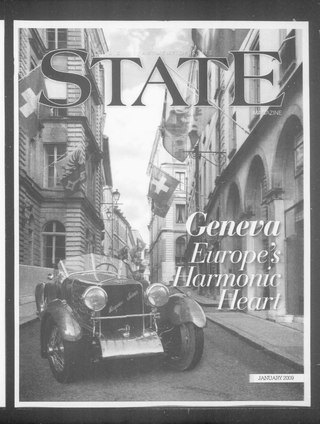
A magazine is a periodical publication, generally published on a regular schedule, containing a variety of content. They are generally financed by advertising, purchase price, prepaid subscriptions, or by a combination of the three.

The Iapydes were an ancient people who dwelt north of and inland from the Liburnians, off the Adriatic coast and eastwards of the Istrian peninsula. They occupied the interior of the country between the Colapis (Kupa) and Oeneus (Una) rivers, and the Velebit mountain range which separated them from the coastal Liburnians. Their territory covered the central inlands of modern Croatia and Una River Valley in today's Bosnia and Herzegovina. Archaeological documentation confirms their presence in these countries at least from 9th century BC, and they persisted in their area longer than a millennium. The ancient written documentation on inland Iapydes is scarcer than on the adjacent coastal peoples that had more frequent maritime contacts with ancient Greeks and Romans.

Harper's Weekly, A Journal of Civilization was an American political magazine based in New York City. Published by Harper & Brothers from 1857 until 1916, it featured foreign and domestic news, fiction, essays on many subjects, and humor, alongside illustrations. It carried extensive coverage of the American Civil War, including many illustrations of events from the war. During its most influential period, it was the forum of the political cartoonist Thomas Nast.

Joseph Hilarius Eckhel was an Austrian Jesuit priest and numismatist.
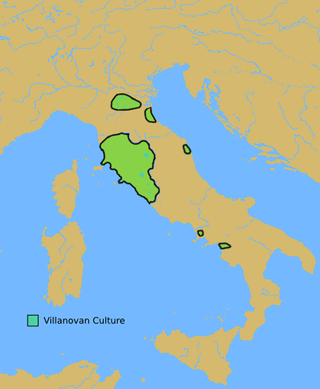
The Villanovan culture, regarded as the earliest phase of the Etruscan civilization, was the earliest Iron Age culture of Italy. It directly followed the Bronze Age Proto-Villanovan culture which branched off from the Urnfield culture of Central Europe. The name derives from the locality of Villanova, a fraction of the municipality of Castenaso in the Metropolitan City of Bologna where, between 1853 and 1855, Giovanni Gozzadini found the remains of a necropolis, bringing to light 193 tombs, of which there were 179 cremations and 14 inhumations.

Antoine Augustin Calmet, O.S.B., a French Benedictine monk, was born at Ménil-la-Horgne, then in the Duchy of Bar, part of the Holy Roman Empire.

Vietnam News Agency is the official state-run news agency of the Socialist Republic of Vietnam. It operates more than 30 foreign bureaux worldwide and maintains 63 bureaux in Vietnam — one for each city and province, including 6 in ASEAN. The current General Director of TTXVN is Nguyễn Đức Lợi. It also operates the website VietnamPlus.
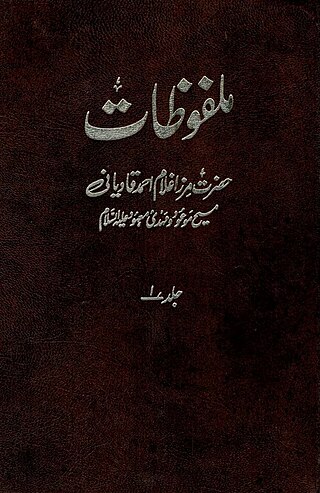
Malfūzāt is a ten-volume collection of the discourses, question-and-answer-sessions, sermons and dialogues of Mirza Ghulam Ahmad, the founder of the Ahmadiyya movement. The volumes contain, for the most part, speech that was transcribed by several of Ghulam Ahmad's close disciples as it was being communicated and was published in Ahmadi periodicals during his lifetime, covering a period starting from 1891 until his death in 1908. This material was compiled and published as a set of volumes during the 1960s.

"Royal Chocolate Flush" is the eighteenth single by Japanese recording artist Misia. It was released on December 5, 2007 as the second single from Misia's eighth studio album Eighth World.

Keizersberg Abbey, also known as Mont César Abbey is a Benedictine monastery on the hill Keizersberg or Mont César in the north of the university town of Leuven, Belgium.
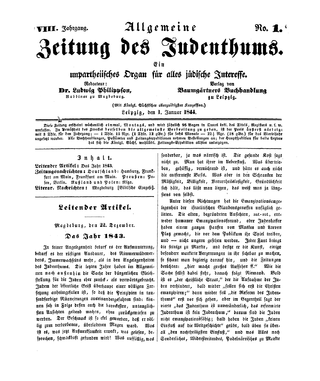
Allgemeine Zeitung des Judentums was a Jewish German magazine devoted to Jewish interests, founded in 1837 by Ludwig Philippson (1811–89), published first in Leipzig and later in Berlin. In 1860 it had a circulation of approximately 1,500. It was read not only in Germany, Austria, and the Netherlands but also in Eastern Europe, and continued to appear until 1922.

"Hoshi no Yō ni..." is a song recorded by Japanese singer Misia, from her ninth studio album, Just Ballade. It was released simultaneously with the album on December 16, 2009, through Ariola Japan. "Hoshi no Yō ni..." is the theme song to the kaiju film Mega Monster Battle: Ultra Galaxy.
Barsisa, in Islamic theology, was an ascetic who succumbed to the Devil's temptations and denied God. He had an enormous impact on the entire Muslim world, from Alexandria to Aleppo and Ḥaḍramawt.

Il Mondo was a weekly political, cultural and economic magazine founded by Gianni Mazzocchi and directed by Mario Pannunzio. It existed between 1949 and 2014.

Lacerba was an Italian literary journal based in Florence closely associated with the Futurist movement. It published many Futurist manifestos by Filippo Marinetti, Antonio Sant'Elia, and others.
Mass media in Germany includes a variety of online, print, and broadcast formats, such as radio, television, newspapers, and magazines.

"Kimi no Soba ni Iru yo" is a song recorded by Japanese singer Misia. It is the theme song of the 2017 Warner Bros. Pictures live action film Fullmetal Alchemist. The song was written by Misia, with lyrics that portray the brotherly bond between the two main characters, Edward and Alphonse, and composed by Los Angeles-based Japanese musician Ichi, and Mayu Wakisaka.
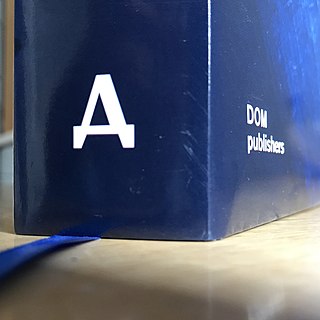
DOM publishers, founded in Berlin in 2005, publishes architectural guides and specialist publications on architecture, urban planning, and design within an international context. The publishing house is owned and managed by Philipp Meuser and Natascha Meuser, who are also practising architects at their firm, Meuser Architekten. It releases around 40 books per year.

Ha-Karmel was a Hebrew periodical, edited and published by Samuel Joseph Fuenn in Vilna from 1860 to 1880. It was one of the important forces of the Haskalah movement in the Russian Empire.